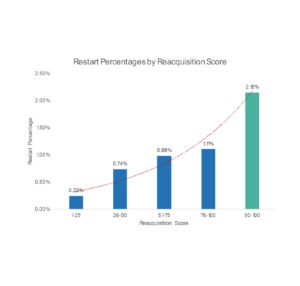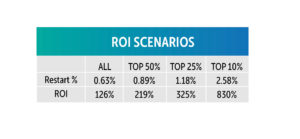How Analytics Can Improve Your DtC Wine Club Re-acquisitions
Mather Economics expands analytics practice to provide services to wine industry
Mather Economics, LLC
June 16, 2020
ATLANTA, Ga June 16, 2020 – Direct to Consumer (DtC) results matter more now than ever before in the wine industry. Wineries need to be able to analyze their customer data to improve their marketing operations related to wine club member acquisition, member retention, and pricing yield for each brand.
Mather Economics, a globally recognized leader in the area of microeconomics, is expanding its practice to provide services in all three of these areas.
Today, we are releasing our first case study for improving wine club re-acquisition of former members that uses estimates of re-acquisition propensities using historical data (at the club member level). By looking at customers who have successfully been reacquired, we are able to isolate member attributes that indicate a customer’s likelihood to resume their membership, and thus, improve the ROI on campaigns by lowering cost per order.
APPROACH
Mather combined data on winery club membership history with purchase behavior to create a comprehensive data set on member activity. An econometric model was designed to estimate the relationship between member attributes on the probability to re-subscribe to the wine club. Important predictive variables included, among many others, the time since last membership period, customer lifetime value, state of residence, previous newsletter subscriptions, and previous allotment bottle count.
RESULTS

After applying the re-acquisition model to the wine club’s current list of former members, a test was established to determine the efficacy of various messaging platforms (direct mail postcard and email) and evaluate overall response rates. Results from the test showed that, while restart rates climbed along with estimated re-acquisition score, a significant jump in restart rates was associated with former that were in the top decile of scores, those between 90 and 100.
Former members that were placed in the highest 10% of predicted score were eight (8) times more likely to be reacquired versus those in the lowest quarterly. Test results confirmed that significant acquisition cost savings could be achieved by focusing reacquisition efforts on those with the highest predicted scores.
ROI IMPROVEMENT
Results from the test show that significant cost efficiency improvements could be achieved by leveraging the predictive re acquisition model.
Sending mailed communication to only the top 50% of predicted restart scores would have improved ROI by approximately 74%.
Test results also indicate that the top 10% of scored former members may respond positively to more intensive acquisition efforts (e.g., personal email, phone call, surprise-and-delight effort, etc.)

NEXT STEPS
With the results of these efforts, the next step is to build a marketing campaign schedule using the response rates and supporting costs, to enhance your acquisition efforts throughout the year. These steps will include varying the frequency and marketing methods of each touchpoint by response group to optimize member acquisition and reduce total costs. The goal is to communicate to those former members with the highest probability to be reacquired and the best bottle allocation options, the optimum number of times annually needed to maximize their marketing budget ROI.
CLIENT TESTIMONIAL
“Our ongoing relationship with Mather has been enlightening. We were excited to see the success of our re-acquisition campaigns. You put so much energy into new club sign ups, this is a way to work with the contact list you already have.”
Carol Rounsaville, General Manager
Denner Winery
Paso Robles, California
TO LEARN MORE
Please feel free to reach out to us to discuss the results of this case study or to learn more about how to use your in-house data to improve your DtC wine club membership acquisition, club member retention (proactive churn prevention strategies), or for an overview of our soon to be released DtC pricing tool to help improve revenue yield for your current and future releases.

